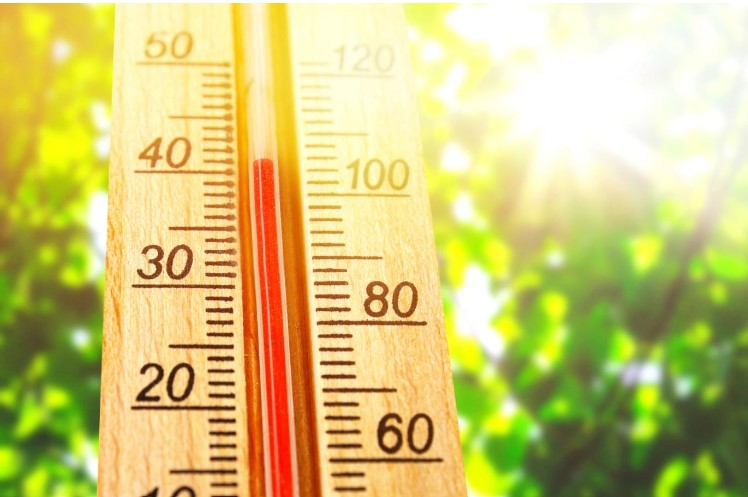Heat Stroke vs. Heat Exhaustion: Staying Safe in the Summer
Did you know heat exposure is behind over 67,000 U.S. emergency department visits yearly? It also causes over 9,000 hospitalizations annually. Even worse, hundreds of people die each year due to heat-related causes.
Heat stroke and heat exhaustion are some of the most common heat-related illnesses. While both result from heat exposure, they differ in symptoms and severity.
So for your and other people’s safety, you should know how to tell heat stroke vs. heat exhaustion apart. This knowledge may even let you save someone experiencing such conditions.
This guide covers the most vital facts about these heat-related illnesses, so read on.
Heat Stroke vs. Heat Exhaustion: Chief Difference
Both heat stroke and heat exhaustion are dangerous, but the former is much worse. Indeed, heat stroke, also known as sunstroke, is the most severe heat-related illness.
In terms of danger level, untreated heat exhaustion is a notch lower than heat stroke. However, it can progress to heat stroke if not addressed promptly.
When Heat Stroke Happens
Heat stroke occurs when the body can no longer control its internal temperature. As a result, its sweating mechanism fails, and its internal temperature exceeds 104° F.
People who experience heat stroke can have internal temperatures of 106° F or higher in 10 to 15 minutes. If not immediately treated and cooled, they can sustain permanent disability. Worse, they’re at risk of death.
Heat Stroke Symptoms
As heat stroke interferes with sweat production, it can cause hot, red, and dry skin. These reactions result from the core body temperature reaching 105° F or higher.
Heat stroke can also lead to a rapid heart rate, an abnormally strong pulse, or both. It can even affect a person’s mental state, causing agitation, confusion, or hallucinations. Dizziness, fainting, slurred speech, and seizures are also common symptoms.
Heat Stroke Treatment
If you think you or someone else is having a heat stroke, please dial 911 immediately. Then, remove outer clothing and move to a shaded, colder area. If possible, go into an air-conditioned building or room.
A cold shower or ice bath can also help quickly cool an overheating body. If unavailable, placing pieces of cold, wet cloth on the outer skin can do. Circulating the air with fans can speed up the cooling process.
When Heat Exhaustion Occurs
Heat exhaustion occurs before heat stroke, usually due to excessive sweating.
Excessive sweating can cause the body to lose too much water and salt. This can lead to severe dehydration and, from there, cause a myriad of symptoms.
Heat Exhaustion Symptoms
Heat exhaustion can raise body temperature, usually below 104° F.
As the above happens, excessive sweating follows. It can also induce weakness and a faster yet weak pulse or heart rate. It also often causes nausea, vomiting, headache, dizziness, irritability, and increased thirst.
Heat Exhaustion Treatment
Rehydration with cold liquids is one of the first steps to take during heat exhaustion. It can prevent this heat-related illness from progressing to heat stroke. However, avoid taking large gulps; take small, frequent sips instead.
Remove unnecessary outerwear, such as double layers, shoes, and socks. Then, use cold compresses to cool the head, face, and neck.
If the symptoms don’t improve, please call 911 immediately.
Preventing Heat Stroke and Heat Exhaustion
While heat-related illnesses can be deadly, they are preventable. The key is to avoid heat; for instance, don’t exercise outdoors if it’s humid and the temperature is in the 80s. Instead, do your fitness routine indoors, or if you want to do it outside, do it early morning or when the sun sets.
But what if you’re part of the 4.5% of civilian workers in the U.S. whose job entails extreme heat exposure? In this case, here are some strategies you should employ.
Wear Heat Protective Clothing
Wear lightweight and loose-fitting clothes made of breathable fabric. They help improve airflow and air movement, helping cool the body.
However, please avoid loose-fitting clothes when working with or near moving machinery. They can get caught in the machines and lead to entanglement injuries.
You should also go for light-colored clothes. These reflect heat, whereas darker-colored ones absorb heat.
If you have to work under direct sunlight, wear a wide-brim hat. This helps shade the head, neck, face, and eyes from heat and skin cancer-causing UV radiation. Likewise, long-sleeved shirts can help protect you against sunburn.
Rehydrate Constantly
Sweating is one of the body’s primary methods of cooling itself. However, for it to sweat effectively, it must have adequate fluids.
So if dehydration is already present, the body sweats less and cools down slower. Avoid this danger by drinking lots of water, preferably cold liquids.
Take Frequent Breaks
Heat exhaustion and heat stroke most often occur because of prolonged heat exposure. Therefore, you should take more frequent breaks if your work area is hotter than 94° F.
Also, the hotter your work environment is, the more frequent and longer your breaks should be. Likewise, the heavier the labor involved, the more often you need extended rests.
The CDC provides a helpful guide for scheduling work and break times in hot environments.
Pay Attention to Coworkers
Many people don’t always recognize heat illness symptoms themselves. They may also think they’re okay even if they’re already on the verge of heat stroke.
So, pay attention to your coworkers and help them avoid deadly heat illnesses. As soon as you notice symptoms in a colleague, tell them to take a break and go somewhere colder.
You can also join a health and medical learning platform to learn about heat risks and other job hazards. The more you know, the safer you and your coworkers can be at work.
Avoid Heat-Related Illnesses
Now you know severity is the main factor setting heat stroke vs. heat exhaustion apart. The former is the worst and most severe of all heat-related illnesses. However, heat exhaustion is dangerous, too, and can progress to heat stroke if not treated ASAP.
So, for your safety and well-being, please avoid prolonged heat exposure.
If you liked this article, you’d love our other outdoor safety tips. For starters, check out our post on the safety must-haves for your next beach trip!





